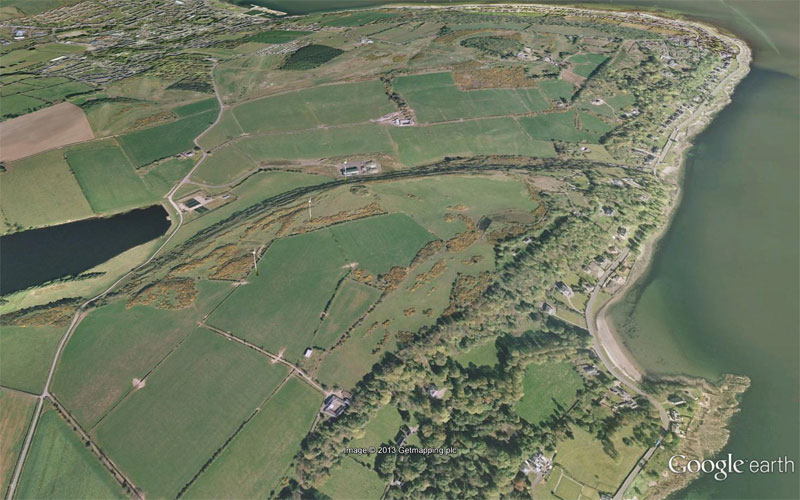This page is now ancient history as the planning application for three wind turbines at Ascog Farm was submitted in October 2012, validated by Argyll & Bute Council on 29.10.2012 before being dismissed at planning on 22.03.2013 and, finally, killed off at appeal on 04.12.2013.
The whole, rather sad, story highlights the difficulty of getting onshore wind energy generating capacity built in Scotland (and many other parts of the UK) and remains online as an important archive which, we hope, may help guide more enlightened planning policies and dispel many of the myths surrounding renewable wind energy generation…
Nearly ten years on, we all know what wind turbines look like, most people accept them in the landscape and, in 2019, low-carbon energy generated the majority of the UK’s electricity for the first time.
To anyone newly embarking on this process, or to policy makers researching just how difficult planning for onshore wind can be in the face of concerted and often misguided opposition, please read the News Archive, which will last for posterity!
Here’s how things were back then…
Ascog Farm has good potential for renewable wind energy generation, sadly dismissed by the Scottish planning system purely on the basis of views.
Average yearly wind speeds at 50m above ground are estimated at ca.9m/sec (ca.17 Knots) although the daily figure will be subject to variation, as seen in the Windfinder.com chart for nearby Millport/Little Cumbrae shown below.
The Hill of Ascog, situated roughly in the centre of the land, rises to 341ft (104m) above sea level. There is an unobstructed fetch to the wind, which is predominantly Sou’westerly.

Working with the Scottish Agricultural College we have been investigating the feasibility of siting up to three Enercon wind turbines on the farm.
It’s early days but it appears that Enercon E48 or E44 turbines may be the best bet, these generate power from 3m/sec (ca.6 Knots) up to a cut out wind speed of 28-34m/sec (ca.54-66 Knots). The wind monitoring mast will tell us more.
Depending upon the turbine model chosen, and subject to planning permission being granted, renewable wind energy generation could provide enough output to power a substantial number of the ca.3,500 households on the Isle of Bute – in the process offsetting thousands of tonnes of harmful CO2 emissions.
The potential of the site has been recognised by Community Energy Scotland and the Energy Saving Trust who together are administering the Scottish Government’s Community and Renewable Energy Scheme (CARES) .
Through CARES we receive help in funding the high-risk planning application that must be accompanied by a very detailed Environmental Impact Assessment (EIA).
The EIA will address:
- Alternatives
- Site selection
- Cumulative impacts
- Zones of visual influence
- Design principles
- European species
- Ornithology
- Ecological assessment
- Short term impacts
- Archaeology/heritage resources
- Tourism/recreation interests
- Amenity issues
- Technical issues
If our application for renewable wind energy generation is successful, we will give a minimum of £10,000/installed mW capacity/year OR 20% of net profit (whichever is the greater) for twenty years to our chosen local partner Fyne Homes, a registered Scottish Charity, to administer (through the auspices of their organisation Towards Zero Carbon Bute) for the benefit of those living on Bute.
Our financial commitment is greater than the base level under CARES (of £10,000/installed mW capacity) and way in excess of the power industry norm of £2,000/installed mW capacity. Furthermore, once the forecast £3.5million capital expenditure is paid down larger profit-related payments will flow to the community.
During its lifetime this fund could produce over £1.5million for Bute.

©The Buteman
As we have mentioned to the three Bute councillors and others on several occasions, if the community organises itself and invests in the capital expenditure of the project we are happy for profit-related payments to be in line with capital contributions up to a 49.9% / 50.1% equity split.
At Neilston near Glasgow this form of community investment has proved successful and will lead to the renovation of the whole town. Community investment in the Ascog wind energy project and any other sites on the Island could offer similar opportunities for Bute.
The UK Government, Scottish Government and Argyll & Bute Council all back the development of renewable energy schemes to help combat climate change.
We hope that Ascog Farm – and the wind that blows over it – will be able to play its part in lowering greenhouse gas emissions as well as providing secure revenue for the farm business and the local community well into the future.